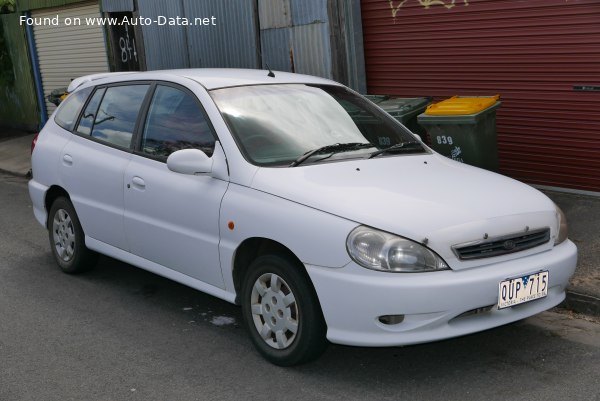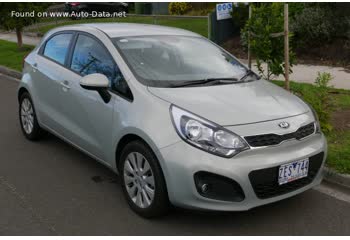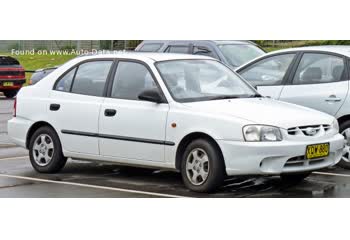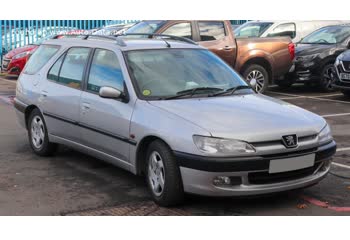Everything you need to know about specifications and performance - Kia Rio 2000 - 1.5i 16V (108 Hp)

Overview:
What is the engine capacity of a Kia Rio 2000?
The engine capacity of the Kia Rio 2000 is 1493 cm.
Kia Rio 2000 How many horsepower?
The engine power of the Kia Rio 2000 is 108 Hp @ 6000 rpm..
How much gasoline does a Kia Rio 2000 consume?
The Kia Rio 2000 consumes 7.3 liters of gasoline per 100 km
General:
Engine:
Power: 108 hp @ 6000 rpm.
Power per litre: 72.3 hp/l
Torque: 140 nm @ 4500 rpm.
Engine displacement: 1493 cm
Number of cylinders: 4
Engine configuration: Inline
Number of valves per cylinder: 4
Fuel injection system: Multi-port manifold injection
Engine aspiration: Naturally aspirated Engine
Valvetrain: DOHC
Engine layout: Front, Transverse
Cylinder Bore: 75.5 mm
Piston Stroke: 83.4 mm
Compression ratio: 9.3
Performance:
Fuel Type: Petrol (Gasoline)
Fuel consumption (economy) - urban: 9.4 l/100 km
Fuel consumption (economy) - extra urban: 6.1 l/100 km
Fuel consumption (economy) - combined: 7.3 l/100 km
Acceleration 0 - 100 km/h: 11.6 sec
Acceleration 0 - 62 mph: 11.6 sec
Maximum speed: 175 km/h
Weight-to-power ratio: 8.7 kg/Hp, 114.9 Hp/tonne
Weight-to-torque ratio: 6.7 kg/Nm, 148.9 Nm/tonne
Acceleration 0 - 60 mph: 11 sec
Space:
Kerb Weight: 940 kg
Trunk (boot) space - maximum: 1277 l
Trunk (boot) space - minimum: 499 l
Fuel tank capacity: 45 l
dimensions:
Length: 4215 mm
Width: 1675 mm
Height: 1440 mm
wheelbase: 2410 mm
Front track: 1430 mm
Rear (Back) track: 1435 mm
Minimum turning circle (turning diameter): 9.5 m
Powertrain, Suspension and Brakes:
Drivetrain Architecture: The Internal combustion Engine (ICE) drives the front wheels of the vehicle.
Drive wheel: Front wheel drive
Number of gears and type of gearbox: 5 gears, manual transmission
Front brakes: Ventilated discs
Rear brakes: Drum
Assisting systems: ABS (Anti-lock braking system)
Steering type: Steering rack and pinion
Power steering: Hydraulic Steering
Tires size: 155 R13
Front suspension: Spring Strut
Rear suspension: Coil Spring
See also

Last generation.
Its production began in 2018 until 2020

Other generation.
Its production began in 2011 until 2015

Same production year and almost the same engine capacity.
Its production began in 2000 until 2003

Same production year and almost the same engine capacity.
Its production began in 2000 until 2002
Write a comment